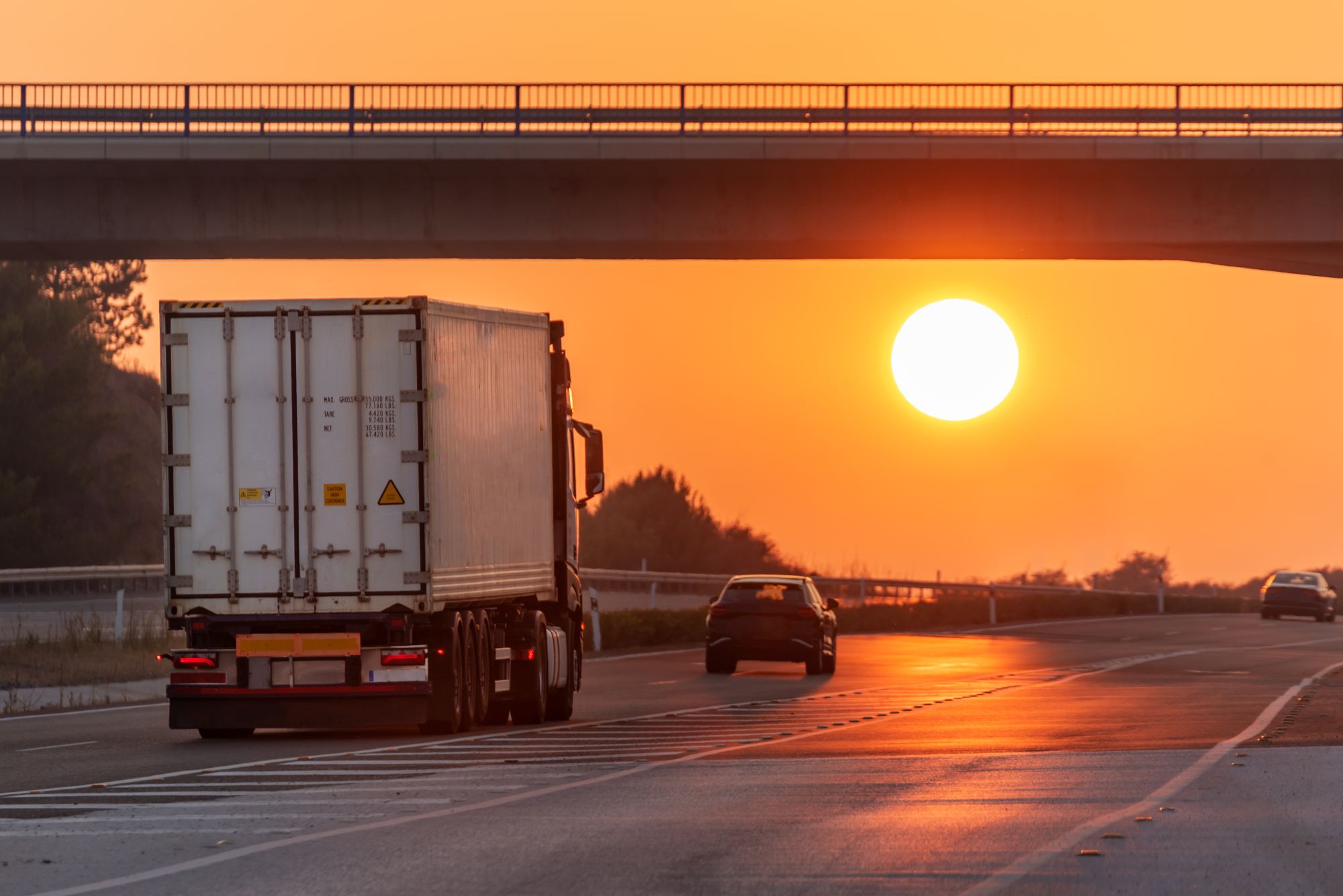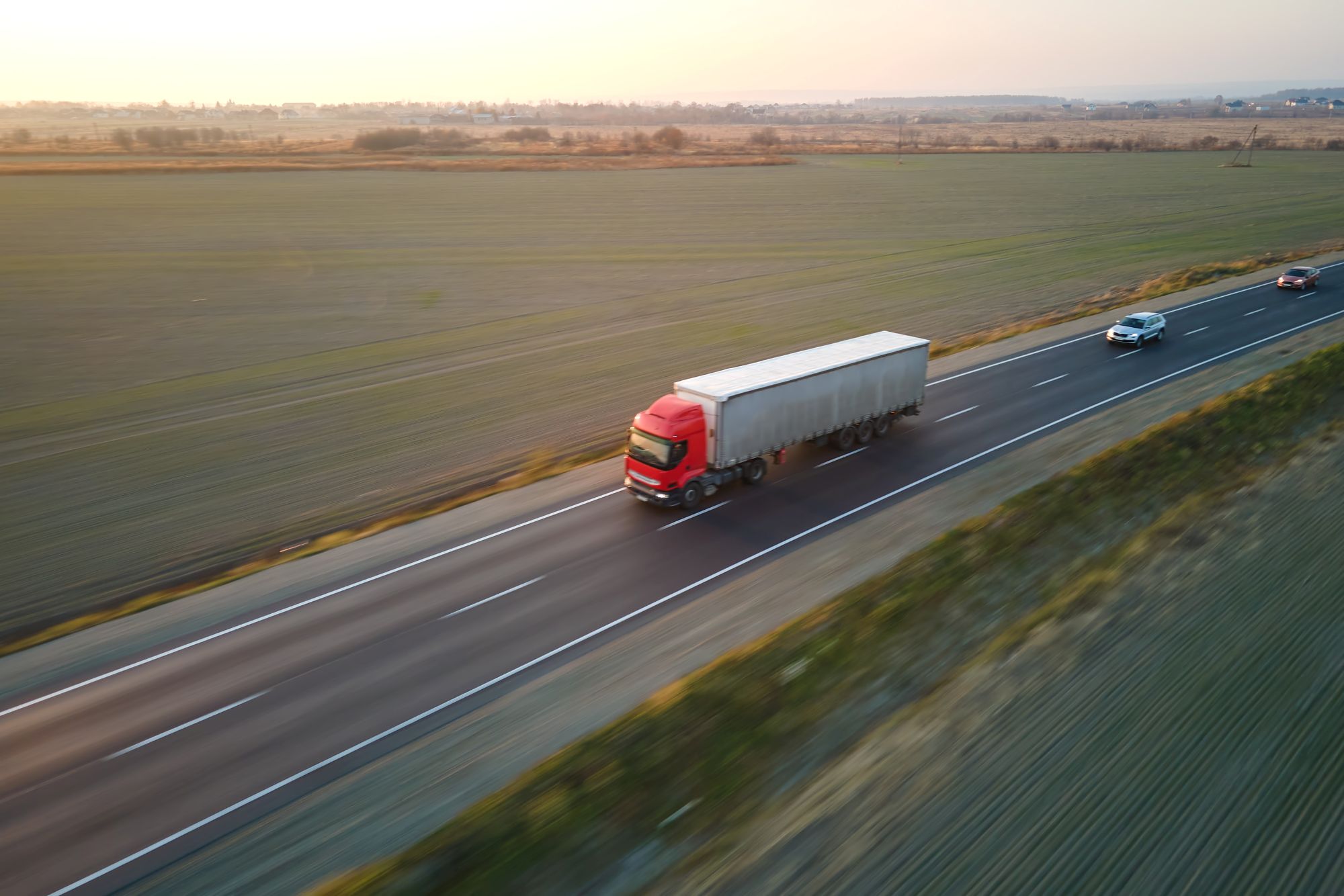
Guest
Come l'ondata di calore in Europa sta influenzando la mobilità: come essere al passo con i tempi
Creato: 31/07/2025
•
Aggiornato: 31/07/2025
Le strade d'Europa stanno cuocendo e il caldo non fa che aumentare. In tutto il continente, il mese di luglio 2025 ha fatto registrare temperature record, guasti alle infrastrutture e disagi nel settore dei trasporti su una scala senza precedenti. Per gli operatori delle flotte e i conducenti professionisti, la sfida non è più teorica. Il caldo estremo è qui e sta ridisegnando il panorama della mobilità in tempo reale.
Molto è stato scritto sugli impatti sulla salute e sui segnali climatici dell'ondata di caldo di quest'anno. Ma si è prestata molta meno attenzione a come questa ondata stia influenzando la logistica, le reti di trasporto e le persone che si occupano della movimentazione delle merci attraverso le frontiere.
Questo articolo analizza come le ondate di calore stiano sconvolgendo il settore del trasporto stradale europeo - dallo scioglimento dell'asfalto e dalle autostrade incrinate agli incendi, ai problemi di sicurezza dei conducenti e ai ritardi nelle consegne - e offre consigli pratici per aiutare le flotte a rimanere operative, resilienti e un passo avanti.
Le ondate di calore stanno diventando la nuova normalità
Secondo l'Organizzazione meteorologica mondiale, l'Europa sperimenta regolarmente il caldo estremo, con temperature ben al di sopra della norma stagionale. Nella prima settimana di luglio 2025, la Germania ha registrato massime superiori a 39°C, mentre Spagna e Portogallo hanno affrontato temperature superiori a 46°C durante il mese. L'Europa, nel suo complesso, si sta riscaldando a circa il doppio della media globale.
Queste condizioni non sono solo fastidiose, ma anche dannose dal punto di vista operativo. Una ricerca citata da Logistics Business mostra che le ondate di calore sono un fattore di rischio crescente per le operazioni di trasporto, riducendo il benessere dei conducenti, danneggiando il carico e ritardando le consegne.
Di conseguenza, le merci sensibili alla temperatura, come gli alimenti, i prodotti farmaceutici e l'elettronica, stanno diventando più difficili da trasportare in modo sicuro. Gli operatori vedono aumentare i tassi di deterioramento e le penali per i ritardi nelle consegne. La situazione è particolarmente complessa nelle aree in cui le reti elettriche sono messe a dura prova dall'aumento della domanda di raffreddamento, riducendo l'affidabilità della catena del freddo.
Strade che si sciolgono e autostrade crepate
Uno dei segni più evidenti del peso del caldo sulla mobilità si è avuto all'inizio di luglio, quando parti della rete autostradale tedesca hanno iniziato a creparsi sotto la pressione dell'espansione termica. Alcuni tratti delle autostrade A1, A9 e A10, tra gli altri, sono stati chiusi per riparazioni urgenti a causa di lastre di cemento piegate e giunti rotti - una conseguenza diretta della prolungata ondata di calore del Paese.
Con l'aumento delle temperature al suolo e l'inaridimento della vegetazione, anche gli incendi stanno diventando una caratteristica regolare - e pericolosa - delle estati europee. Secondo il riepilogo di Wikipedia sull'ondata di calore europea del 2025, gli incendi sono scoppiati nel sud della Spagna, in Germania e in Grecia, provocando evacuazioni di massa e la chiusura temporanea delle principali arterie stradali e dei valichi di frontiera.
Nel giugno 2025, la A939 in Scozia è stata chiusa a causa di incendi, mentre in Francia gli incendi hanno chiuso diverse strade e gallerie stradali intorno a Marsiglia. Queste chiusure non creano solo caos nel traffico, ma significano che i mezzi pesanti devono deviare, spesso attraverso strade strette e inadatte che possono allungare i tempi di percorrenza di ore.
Inoltre, il fumo riduce la visibilità per i conducenti e comporta rischi per la salute, soprattutto per coloro che trascorrono molte ore in cabina con un filtraggio dell'aria inadeguato. In molte aree, inoltre, i servizi di emergenza sono in affanno, con conseguenti ritardi nello sgombero delle strade interessate o nella gestione delle deviazioni.

Sicurezza dei conducenti
I rischi per le infrastrutture sono accompagnati da quelli per le persone. Gli autisti professionisti sono particolarmente vulnerabili allo stress da caldo, alla disidratazione e alla stanchezza. La propria guida estiva di SNAP per gli autisti illustra i pericoli del surriscaldamento delle cabine di guida, la fatica di lunghe ore a temperature elevate e l'importanza dei sistemi di raffreddamento e del riposo.
Molte strutture stradali nell'Europa meridionale e orientale sono ancora poco attrezzate per sostenere il benessere dei conducenti durante le ondate di calore. Le aree di sosta climatizzate, i parcheggi ombreggiati e l'accesso affidabile all'acqua non sono garantiti, rendendo la rete SNAP network of verified, comfortable locations più importante che mai.
"L'ondata di caldo di quest'estate è un campanello d'allarme", afferma Raquel Martinez, responsabile vendite europee di SNAP. "I sistemi di trasporto europei sono stati progettati per un clima più fresco. Ma non torneremo indietro. Le flotte che si adattano ora - con i giusti strumenti, le giuste strategie di riposo e la giusta tecnologia - saranno quelle che prospereranno".
Iniziano i divieti per i camion in tutta Europa
In risposta al caldo, diversi Paesi hanno introdotto o esteso i divieti di circolazione per i mezzi pesanti. Come riporta [TrafficBan.com] (http://trafficban.com), la Bulgaria e l'Ungheria hanno imposto restrizioni diurne ai mezzi pesanti quando le temperature si sono impennate nel luglio 2025. Le restrizioni sono state applicate anche ai veicoli pesanti su alcune strade vulnerabili durante determinati periodi.
Inoltre, i divieti nazionali di circolazione per i camion in Germania, Francia, Polonia e Italia aggravano la congestione estiva. I dettagli completi sono disponibili sul sito Trafficban.com, che elenca le restrizioni regionali e temporali in tutto il continente.
Per gli automobilisti e i pianificatori, questi divieti creano un mosaico di zone di rispetto e limitazioni temporali che richiedono una navigazione attenta e strumenti di pianificazione aggiornati.
Impatto assicurativo
Con l'aumento dei rischi posti dal caldo estremo, gli assicuratori iniziano a rivalutare la loro esposizione. È probabile che ciò influisca sui premi in generale. La copertura delle merci in transito è sotto pressione, in particolare per i carichi sensibili alle temperature, con un aumento delle richieste di risarcimento per deterioramento e mancato rispetto dei termini di consegna. Anche i costi assicurativi dei veicoli potrebbero aumentare a causa dell'incremento delle richieste di risarcimento per guasti e incidenti dovuti al caldo.
Nel frattempo, cresce l'attenzione per la responsabilità dei datori di lavoro, soprattutto nel caso in cui gli autisti o il personale soffrano di problemi di salute legati al caldo a causa di disposizioni inadeguate in materia di benessere. L'insieme di queste tendenze potrebbe significare premi più elevati e conversazioni di rinnovo più difficili per gli operatori che non dispongono di chiari piani di resilienza.
Come affrontare le ondate di calore
Noi di SNAP crediamo che la chiave per affrontare le ondate di calore in Europa sia la preparazione, la pianificazione e la gestione proattiva del benessere.
Ecco cosa possono fare gli operatori:
Pianificare la temperatura e il terreno: Utilizzare i dati meteo in tempo reale per aiutare gli autisti a evitare i percorsi ad alto rischio.
*Equipaggiare i conducenti per le condizioni: * rifornire i veicoli di acqua, dispositivi di ombreggiamento e kit di raffreddamento di emergenza.
Controllare i regolamenti quotidianamente: Rimanere informati sui cambiamenti dei divieti di circolazione dei camion attraverso le frontiere utilizzando fonti verificate come Trafficban.com.
Ottimizzare le aree di sosta: Incoraggiare i conducenti a utilizzare app come intruck per individuare strutture ben attrezzate e dotate di aria condizionata in tutta Europa.
Mantenere i veicoli al caldo: Prestare particolare attenzione ai pneumatici, ai sistemi di raffreddamento e alle prestazioni della batteria durante la manutenzione, soprattutto per i veicoli elettrici o ibridi.
**Assicurarsi che le polizze tengano conto dei ritardi dovuti al clima, del deterioramento del carico e dei danni da incendio.
Iniziare a pianificare le ondate di calore oggi
Consultate la nostra mappa interattiva SNAP o scaricate oggi stesso l'app intruck. Con migliaia di partner fidati in tutta Europa, è la vostra scorciatoia per fermate più sicure, a prescindere dalla temperatura.



